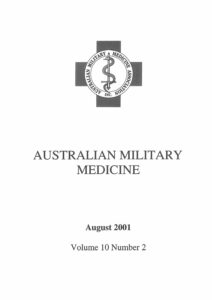Editorial – Vision for the future
“You can never plan the future by the past” (Edmund Burke 1729-1797) I have now just completed nine months as the Director of the Joint Health Support Agency. I often get asked how long I have been in the job, as many people imagine, for some bizarre reason, that I have been in the job… Read more »




 Download the whole edition here.
Download the whole edition here.


